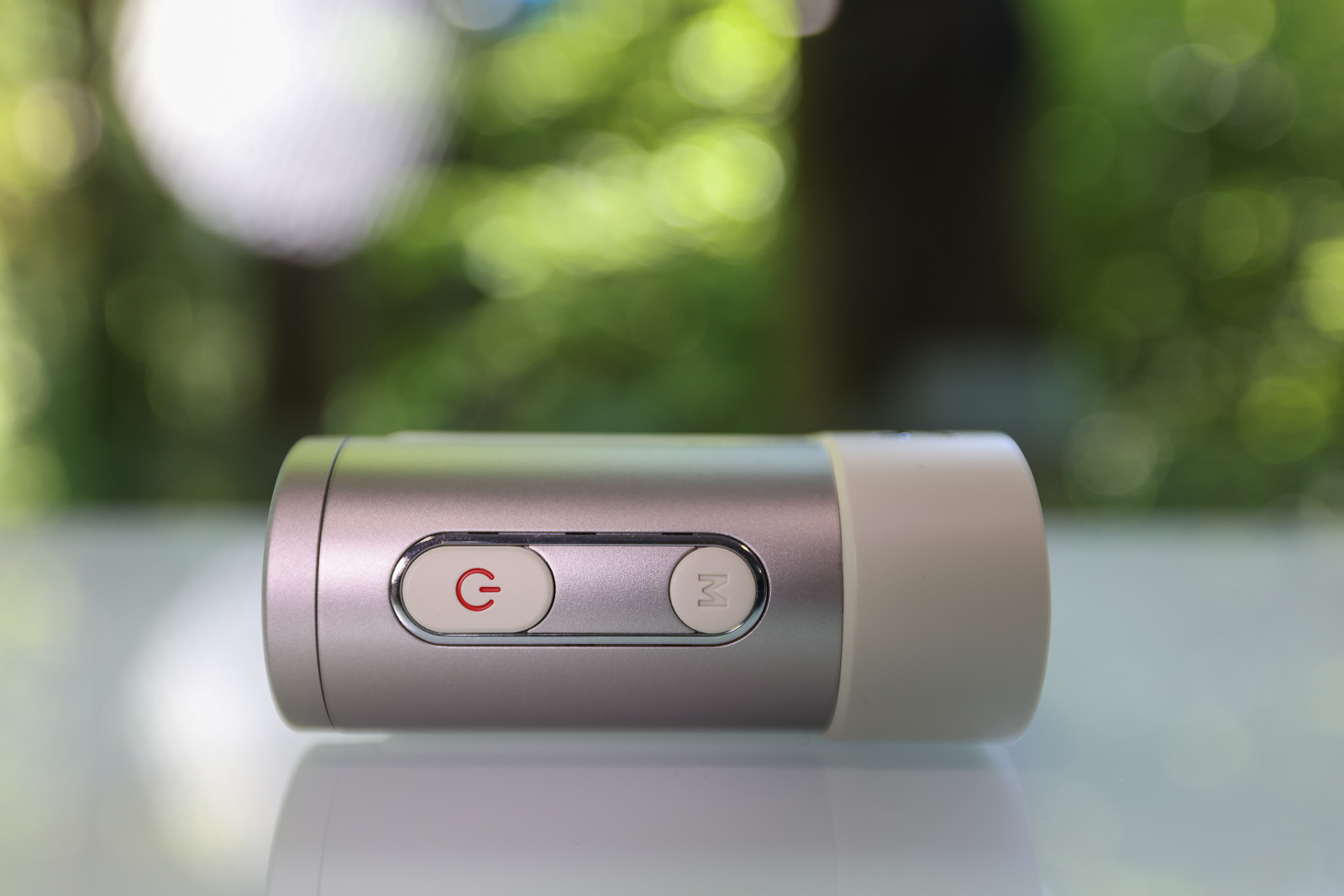Earlier this month, I touted the new GPS features of the Precision Pro Titan Elite as game-changing.
And I’ve been making a ton of noise about the insane price drop of the Voice Caddie TL1 – making it my current “best overall” rangefinder pick.
But while I getting swept away by those devices, Voice Caddie quietly rolled out the Laser Fit.
And honestly? I think I should have been paying more attention.
Because not only is it one of the best rangefinders I’ve tested under $200, but it’s also one of the only devices on the market to have a “triangulation” feature.
What does that mean, and is the Laser Fit worth buying? Let’s find out in this Voice Caddie Laser Fit review.
An Underdog Is Coming for the Champs
Before I jump into the meat of this review, I want to say how impressed I’ve been by Voice Caddie lately.
I feel like they’ve always been a little under-the-radar, and haven’t gotten as much respect as some of the bigger brands in the golf space.
But they’ve consistently created products that both perform well and have unique features.
Like the Swing Caddie SC4, which is the only launch monitor under $500 to have a remote, a built-in screen, and provide simulator access.
Or the Voice Caddie SL3 which has a hybrid screen for GPS data.
But this year, on top of creating great products, they’ve gotten real aggressive with their pricing.
What made the TL1 so desirable is that they dropped the price from $450 all the way down to $245 for Father’s Day! And have long-term pricing at $280 for select partners.
It was good at $450. But at $280 or less, it becomes an insane deal.
All that to say, keep an eye on Voice Caddie. They’re doing some innovative stuff, and doing it at a price that should scare their competition.
The Laser Fit has a better display than most rangefinders under $200. Add in the fact it has triangulation? And you have a very unique product that offers a ton of bang for the buck.
First Impressions of the Voice Caddie Laser Fit
The packaging on the Laser Fit is nothing special – and that’s not a bad thing. The box is nice, and inside there’s the device, a USB-C charging cable, and a standard canvas case.
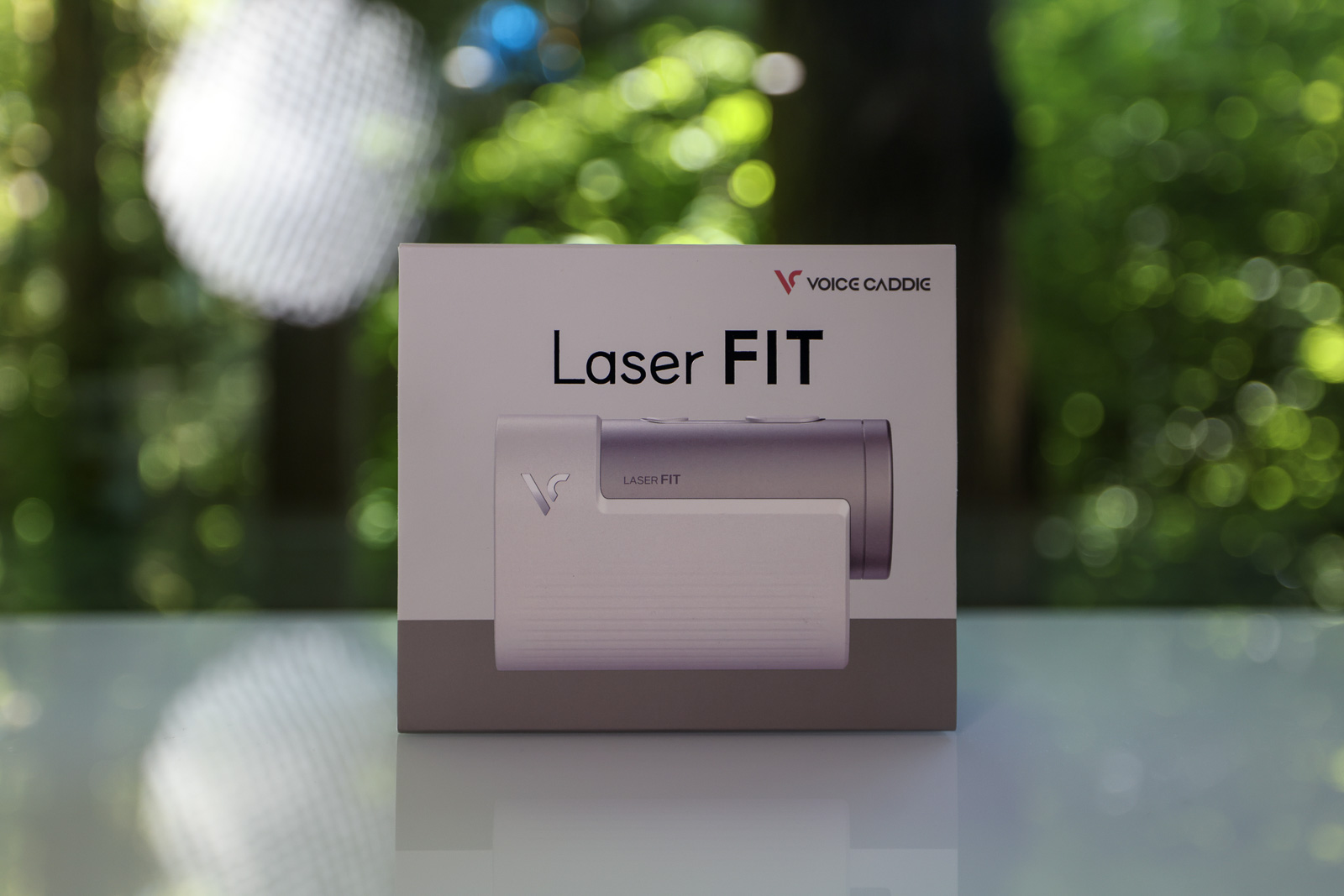
Some of the more expensive Voice Caddie rangefinders came with a bright white and red case, that is unique – but is very much a love-or-hate design.
The case with the Laser Fit isn’t quite as unique but is definitely more down the middle. I think for most people this is a good thing and something no one will take issue with.
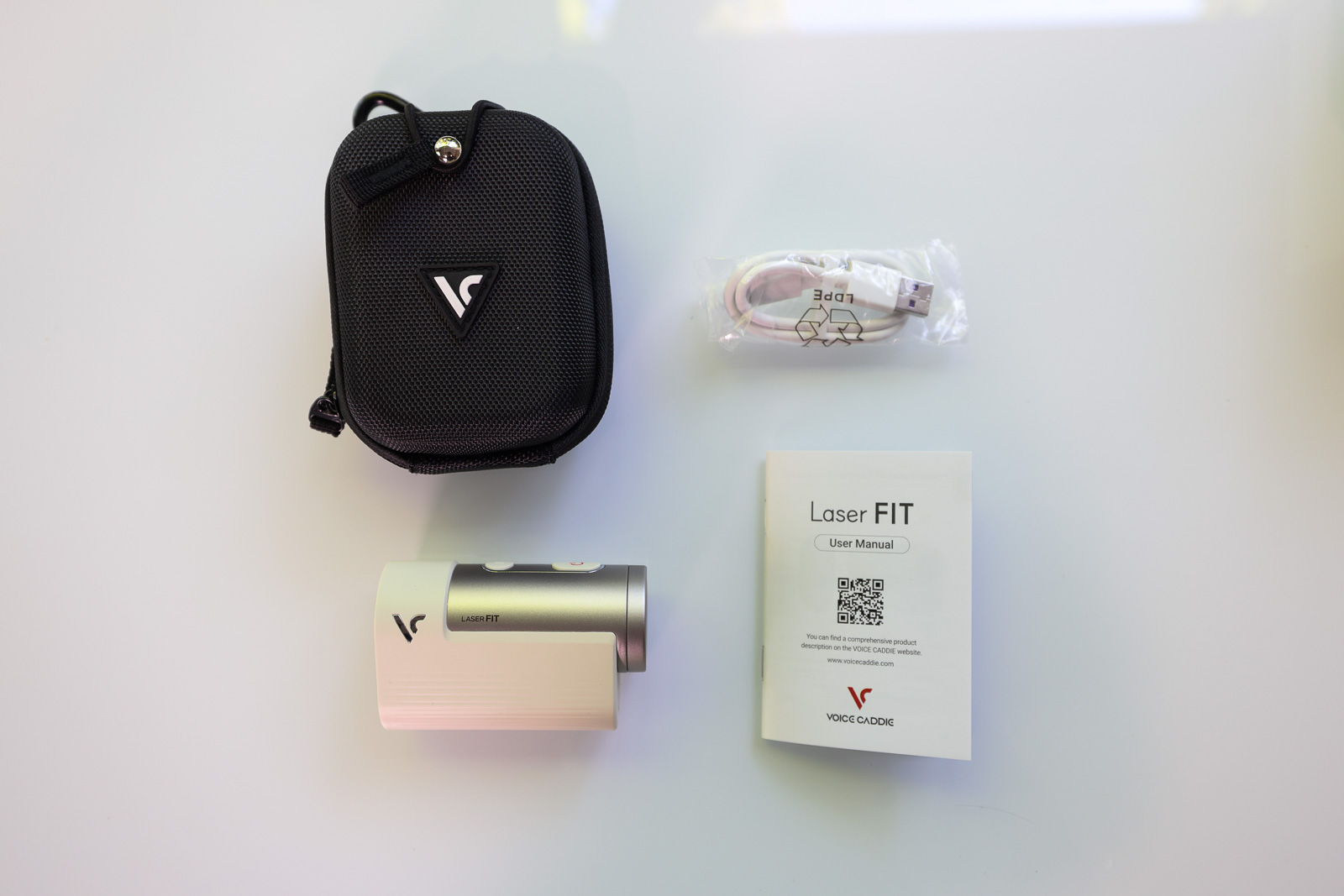
The device itself is considerably smaller than I was expecting. In fact, it might edge out the TecTecTec KLYR as the most compact rangefinder I’ve tested.
I think the Laser Fit is a really nice looking device with the white/beige motif that stands out from a lot of other competing models.
The downside is that the build quality on it definitely doesn’t feel super robust.
I’m generally not overly concerned with waterproofness on rangefinders, as I’d be shocked if a rainstorm caused issues with any rangefinder.
But this to me feels like it would be one of the least water-resistant devices I’ve used.
However, at $199 (or $179 for Breaking Eighty readers), you have to make tradeoffs.
Especially considering this device has a couple of features you rarely (or never) see at this price range.
Overall my first impressions are very positive given the affordable price point of the Laser Fit.
But as always, this doesn’t mean anything if it doesn’t work well.
So does it?
Voice Caddie Laser Fit Features and Performance
The size of the Laser Fit will either be a pro or a con for you. If you have smaller hands or just prefer a smaller (and lighter) device, you’ll really like this unit.
I generally prefer a heavier, larger rangefinder as it tends to make it easier to control the laser and also just adds to a general sense of better build quality.
For me, the Laser Fit is a little too small. That said, the small size hasn’t caused any problems for me either.
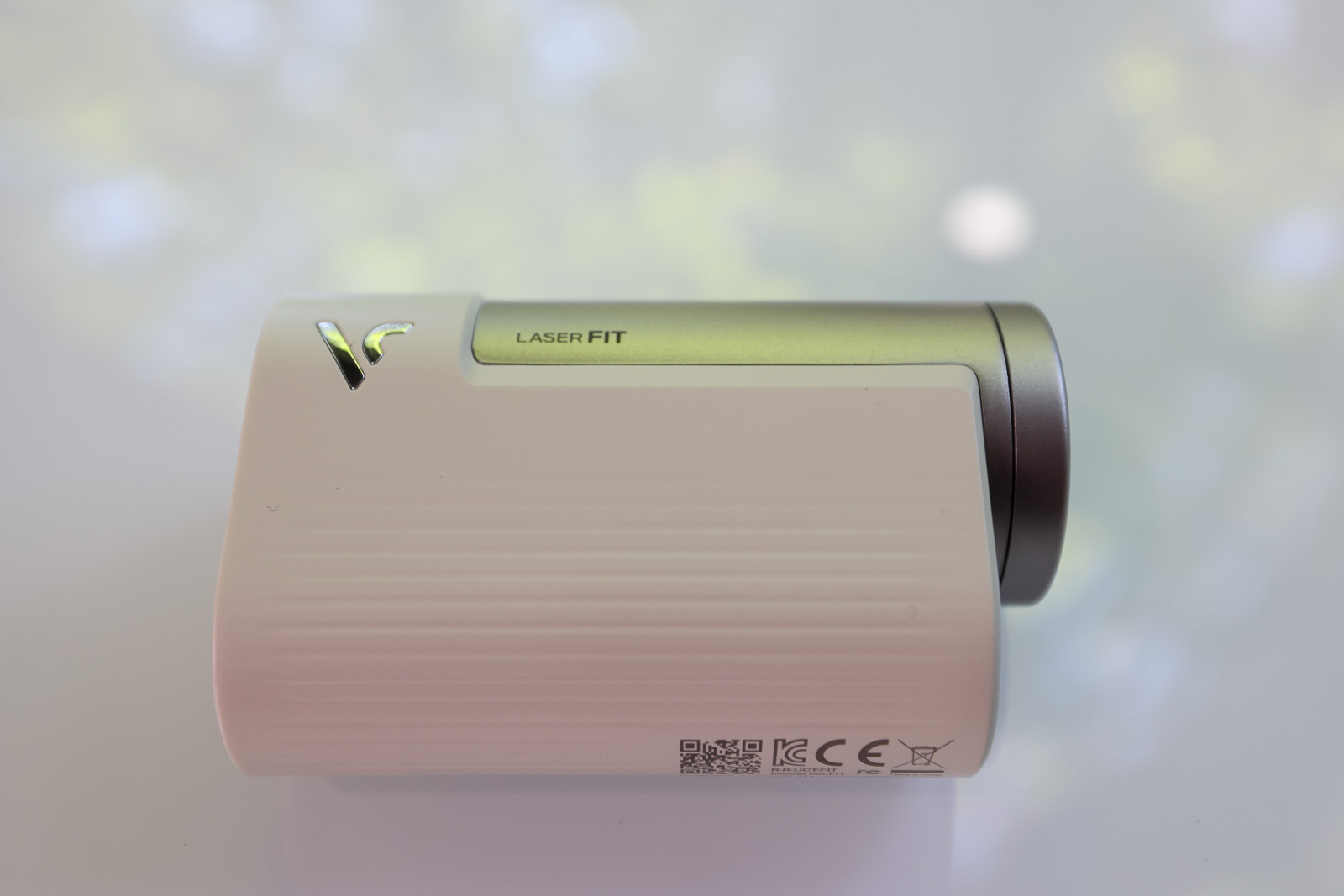
It does a decent job of locking onto the flag quickly and gives accurate yardages.
It’s definitely not quite as dialed at catching the flag on the first go when compared to more expensive products from Cobalt, Bushnell, or even Voice Caddie.
70% of the time you’ll get it right away, and the other 30% it may take a couple shots. But overall it’s within a range that should be acceptable for most people.
However, when you combine this with its small size, I wouldn’t suggest this as being the best rangefinder for people with shaky hands.
The 6x display is surprisingly good and clear for a product under $200. I’d put it on par with the TecTecTec KLYR in this regard.
One of the primary features you don’t often see at this price is a dual-color display.
Surprisingly, I’ve found the red LED display on the Laser Fit to look pretty good. Usually at this price range it’s more of a detriment to optical quality and user-experience, than a benefit.
But with the Laser Fit, it actually works well.
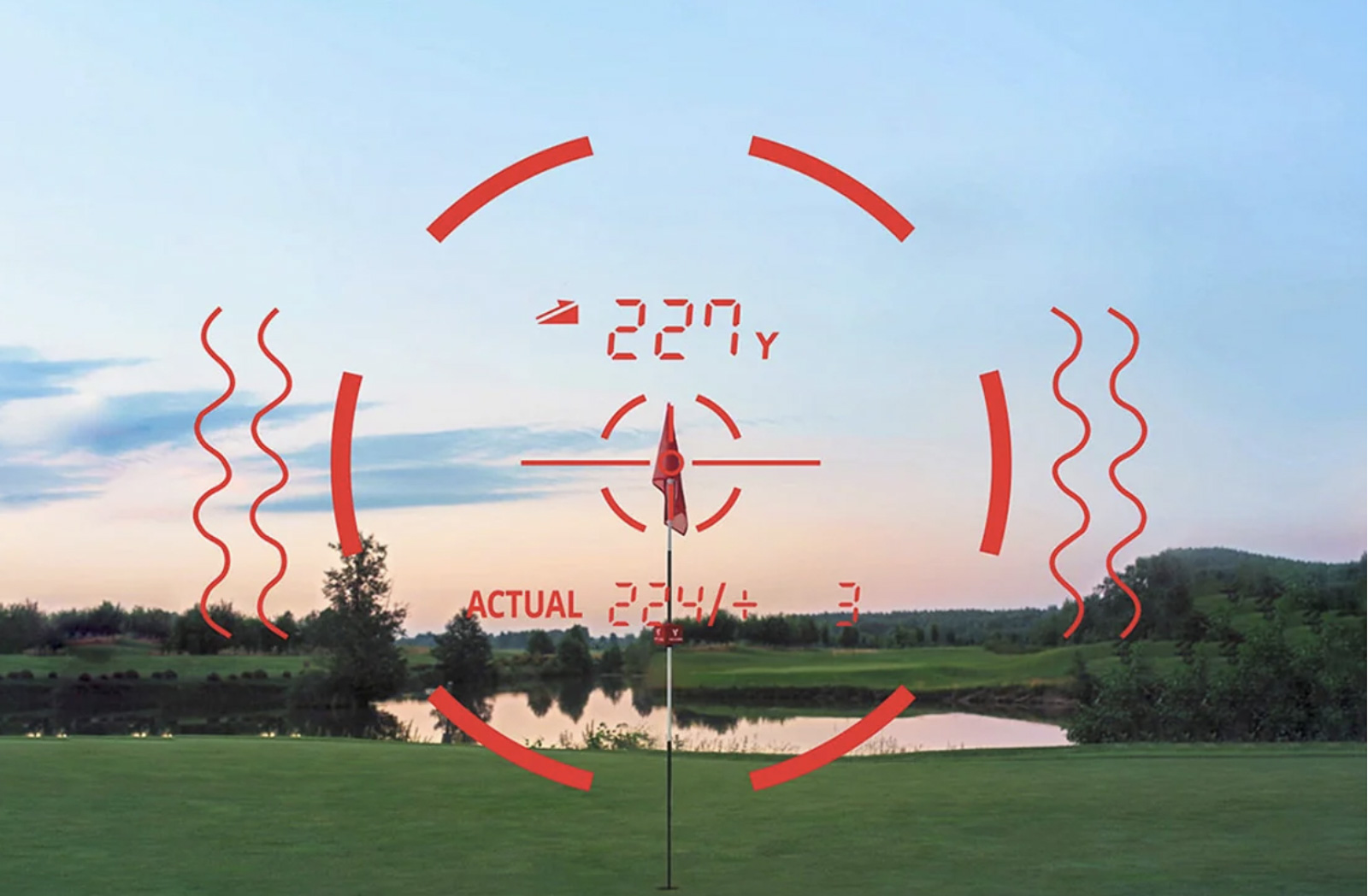
I don’t love the fact the dual-color display is automatic. It will adjust between red and black on its own, and I prefer to have control over this.
That said, I’ve found it to do a better job adjusting than the Cobalt Q-4, which comes in at $100 more.
So as far as just a budget rangefinder goes? It works really well. It’s among the best rangefinders I’ve used under $200.
But the Laser Fit has a trick up its sleeve.
A CaddyTalk Cube for $150 Less? Well…
A few years back CaddyTalk rolled out a product called the Cube, which is a triangulating rangefinder.
This is a feature that is most convenient if you’re playing in a cart and it’s cart path only.
It allows you to be in the cart, shoot the ball, and then shoot the flag, and it will give you the distance between the two – despite the fact you’re not standing at the ball.
While it’s a niche use case, it’s a really cool concept and I’m kind of surprised we haven’t seen more brands incorporate this technology.
Disclaimer, I’ve only used the Cube for about 15 minutes, so I haven’t done a full review of it.
That said in my experience, the Cube feels like a more premium product. From build quality, to screen, to features – it is a step above.
However, when it comes to ease of use? I found the Laser Fit to be easier for a total newbie to get accurate triangulated distances.
The Cube can do more, it just takes a little more time with it to get comfortable.
Whereas I immediately was able to figure out how to use this mode on the Voice Caddie device.
And, it’s pretty cool! It’s easy to get either the actual or triangulated distance, and is very user-friendly.
The downside? For a device that seems built for golfers who ride in a cart, there’s no built in magnet. And at least as of now, there’s no option to buy a case that has one externally – like you can with the Cube.
So if you’re wondering “is this a CaddyTalk Cube for $150 less?”
The answer is, kind of.
As I said, it’s not as robust in terms of build, optics, or features.
But simply for that triangulation feature which is the hallmark of the Cube? Yeah, I’ve found that to work just as well.
My Biggest Complaint May (or May Not) Matter to You
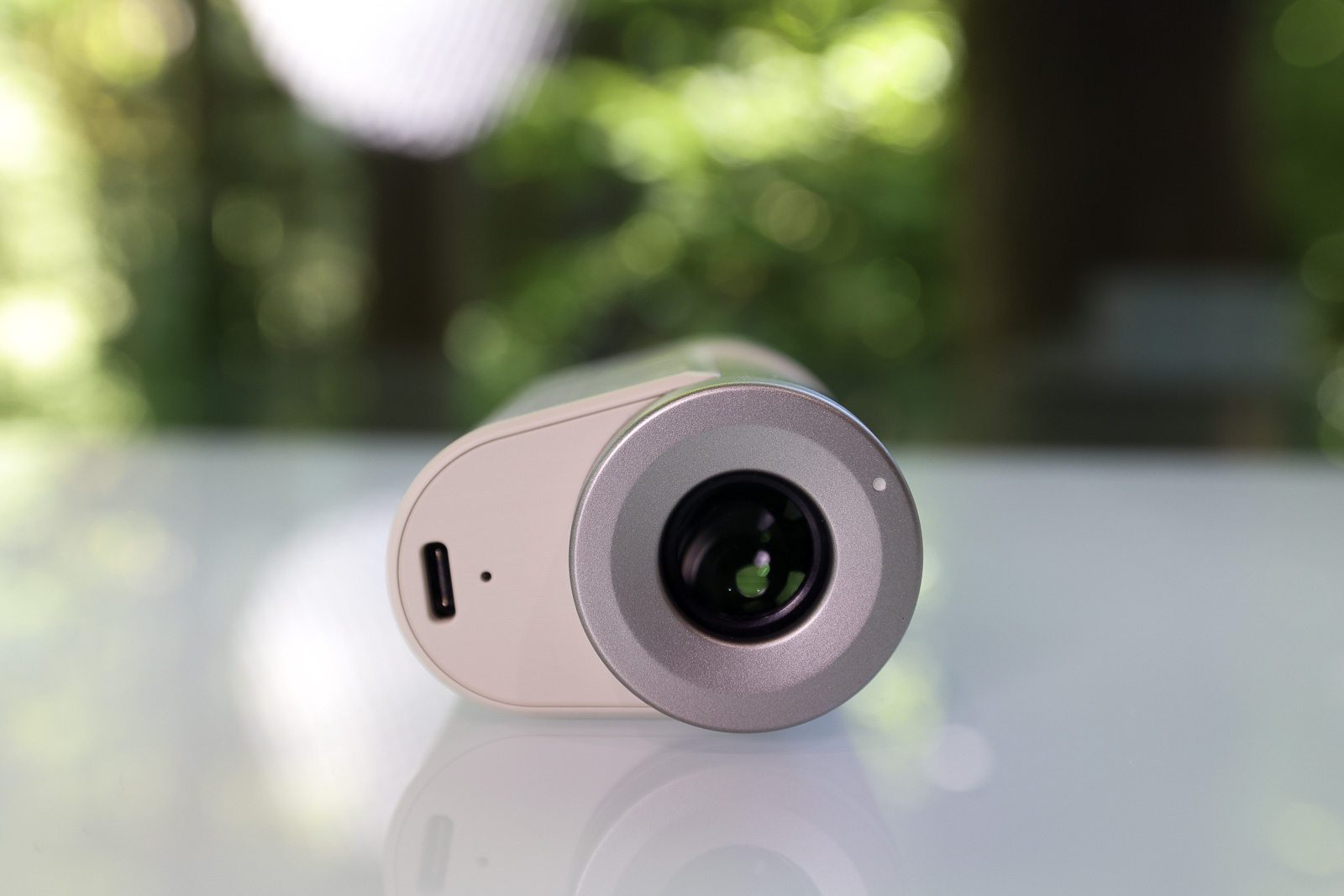
That said, there’s one really big issue I have with the Laser Fit: USB-C charging.
I’m not a fan of USB-C chargers on a rangefinder.
Why?
Because I’m forgetful and I have enough things to charge in my life! So sooner or later, I’m going to forget to charge it and be left with a dead device.
The good news is rangefinders come along way since the 2 rounds of battery life on the Precision Pro R1.
Their new Titan Elite is rated for 40+ rounds if you’re not using it in GPS mode.
The rating on the Laser Fit is for 8 hours – which doesn’t sound like much.
But if you think about how often you’re really using it during a round? It’s on for what, maybe 10-15 minutes at a time? That 8 hours stretches out for quite a while.
I wish I had better data for what that “8-hour” rating looks like in real life. But for me, I’ve played 3 rounds with it now, and have had no issues.
So I don’t think the USB charging is going to be a big deal for most people, but I still (personally) prefer a traditional battery.
Final Thoughts on the Voice Caddie Laser Fit
I’ve been pleasantly surprised by the value the Laser Fit provides.
At a retail price of $199, or the partner price of $179 this brings a lot to the table, and is definitely worth considering.
It works well as just a standard rangefinder, has great optics for the price point, is very compact (pro or con depending on your view), and features a well-implemented triangulation feature.
Does it perform as reliably as more expensive laser rangefinders? No.
Is the build quality super sturdy and robust? Nope.
Is the USB-C charging going to be an issue for some? Yes.
But at $179, it’s certainly in the running for the best rangefinder under $200.
I don’t think it’s a slam dunk, as it depends on what your priorities are in a rangefinder.
But if you like the triangulation feature and want a lightweight, compact device that works well? The Voice Caddie Laser Fit is definitely a product to consider.
The Laser Fit has a better display than most rangefinders under $200. Add in the fact it has triangulation? And you have a very unique product that offers a ton of bang for the buck.
This page contains affiliate links. This means that if you click a link and buy one of the products on this page, I may receive a commission (at no extra cost to you!) This doesn’t affect our opinions or our reviews. Everything we do is to benefit you as the reader, so all of our reviews are as honest and unbiased as possible.
A compact rangefinder that punches above it's weight class.
For this price, the Laser Fit packs in a ton of value. That said it's not perfect, as any rangefinder under $200 is going to have to make tradeoffs. But if you're not overly concerned about build qualty, compact size, and USB-C charging - this is definitely a product to consider.
The Good
- Great, 6x optics with decent dual color display
- Only device with triangulation in this price range
- Mostly fast and reliable laser distances
The Bad
- Build quality isn't super robust
- USB-C charging could be problematic for some
-
Presentation
-
Performance
-
Price
-
Personal Affinity

